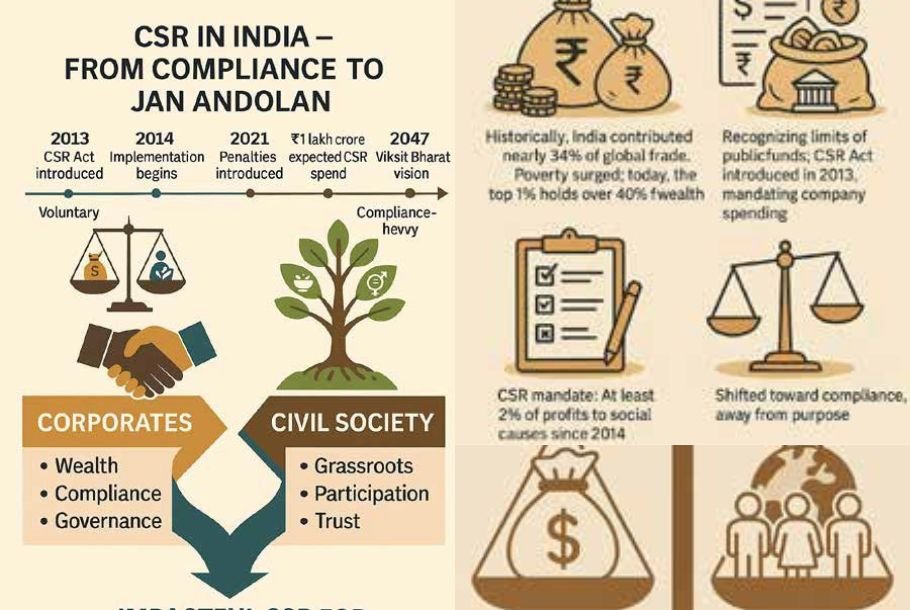
The Evolution of CSR in India
In 2013, India became the first country in the world to legally mandate Corporate Social Responsibility (CSR) through the Companies Act, making it compulsory for certain companies to contribute 2% of their average net profits towards social development. More than a decade since its enforcement, CSR has become an integral part of India’s developmental landscape.
Both Public Sector Units (PSUs) and Private Companies have embraced the mandate, but questions remain: Who is leading the charge in terms of impact, innovation, and sustainability? Do PSUs bring more value to national development goals due to their alignment with state priorities, or is the private sector’s agility and access to technology placing them ahead?
CSR Spend and Focus Areas
According to the Ministry of Corporate Affairs (MCA), the total CSR expenditure from FY 2014-15 to FY 2021-22 crossed ₹1.25 lakh crore, with PSUs accounting for over 30% of the total spend.
- In FY 2021-22, CSR spending stood at ₹26,210 crore, with PSUs contributing approximately ₹6,860 crore.
- Leading PSU contributors include ONGC, NTPC, IOCL, Coal India, and Power Grid Corporation, each investing between ₹100 crore to ₹500 crore annually.
- In contrast, large private entities such as Reliance Industries, Tata Group, Infosys, and Wipro have showcased similar, and sometimes more diversified, investments—ranging from education and skill development to climate action and innovation incubators.
Focus Areas:
- PSUs typically align their CSR with government schemes — Swachh Bharat, Skill India, PM CARES, rural infrastructure, healthcare, and education in underserved regions.
- Private firms are increasingly exploring emerging areas such as green energy, digital literacy, AI for social good, and startup incubation.
A case in point: Tata Trusts’ Digital Nerve Centre for cancer care has introduced a transformative model in public health, while NTPC’s Girl Empowerment Mission (GEM) has reached over 12,000 girls across 22 states.
Impact, Innovation, and the Road Ahead
Impact Assessment:
A 2022 report by the High-Level Committee on CSR revealed that while private companies tend to spend on targeted, high-visibility projects, PSUs focus on community-based, long-term engagement. PSUs are often embedded in the rural landscape, giving them deeper access to marginalized populations.
Yet, impact measurement remains a common challenge. Only 33% of companies conduct third-party impact assessments. This is gradually changing with SEBI’s new Business Responsibility and Sustainability Reporting (BRSR) requirements.
Innovation Quotient:
Innovation is largely driven by the private sector. Wipro’s Mission10x or Infosys Foundation’s Aarohan Social Innovation Awards demonstrate how corporates are incentivizing tech-based solutions to social issues. In contrast, PSU innovation has often been policy-driven, but with significant scale—like Indian Railways’ green initiatives, or IOCL’s solar energy pilots in remote villages.
Finally, a complementary partnership
Rather than viewing it as a competition, public and private CSR efforts should be seen as complementary. PSUs bring scale, trust, and grassroots integration. Private entities contribute innovation, tech enablement, and nimbleness.
As India aims to meet its Sustainable Development Goals (SDGs) and Net Zero commitments by 2070, both sectors must collaborate more deliberately. Joint CSR ventures, blended finance models, and cross-sector alliances could help amplify impact.
The future of CSR in India lies not just in how much is spent, but in how creatively, inclusively, and sustainably those resources are deployed.


















